Welcome to a vibrant culinary adventure that promises to transport your taste buds to sun-soaked shores and bustling markets of the Mediterranean! In this listicle, “”, we delve into the heart of Mediterranean cuisine, celebrating a rich tapestry of flavors, aromas, and textures. From fragrant herbs to robust oils, discover the key elements that bring life to classic dishes and inspire your culinary creations.
With 29 carefully curated ingredients, you’ll gain insight into how each component plays a crucial role in achieving the authentic taste of Mediterranean cooking.Whether you’re a seasoned chef or a curious foodie, this guide will equip you with the knowledge and inspiration to elevate your kitchen endeavors. Join us as we unlock the secrets of this beloved culinary tradition, paving the way for delicious meals that nourish both body and soul. Get ready to embark on a flavorful journey that will transform the way you cook!
Olive Oil: The liquid gold that forms the base of countless Mediterranean dishes, offering a rich flavor and health benefits

Olive oil is more than just a cooking fat; it’s a staple of Mediterranean cuisine and a symbol of wellness that has stood the test of time. Renowned for its rich flavor profile, olive oil enhances everything from fresh salads to hearty stews, making it an indispensable ingredient in your kitchen. Its versatility shines in various culinary applications—be it drizzling over roasted vegetables,blending into a zesty dip for bread,or serving as a base for a homemade vinaigrette. Some popular varieties, like extra virgin, are celebrated for their robust taste and are perfect for finishing dishes, while light olive oil works brilliantly for high-heat cooking due to its milder flavor and higher smoke point.
beyond its culinary appeal,olive oil is celebrated for its numerous health benefits. This liquid gold is rich in monounsaturated fats, which can definitely help reduce the risk of heart disease.Moreover, it’s packed with antioxidants and anti-inflammatory properties that support overall well-being. Incorporating olive oil into your diet may also improve digestion and promote healthy skin, making it a fantastic addition to not only your cooking but your health regimen as well. Including olive oil in your Mediterranean pantry opens the door to a world of flavors and wellness that nourish both the palate and the body.
Garlic: A vital aromatic ingredient, garlic brings depth and character to everything from sauces to sautéed vegetables

Garlic is not just an ingredient; it’s the heart and soul of Mediterranean cuisine. Its robust flavor transforms ordinary dishes into remarkable culinary experiences. When sautéed, garlic releases tantalizing aromas that awaken the senses, providing a base for countless recipes.Whether you’re crafting a rich marinara sauce or a rustic vegetable medley, garlic enhances the natural flavors, creating a harmonious balance. You can enjoy it in various forms—fresh, roasted, or even pickled—each offering a unique taste profile that can elevate your cooking.
Incorporating garlic into your meals also boasts myriad health benefits, making it a staple in both taste and nutrition. Here are a few ways to experiment with this aromatic wonder:
- Roasting: Transform whole cloves into sweet, caramelized nuggets perfect for spreading on crusty bread.
- Infusions: Create garlic-infused oils that accentuate dressings or enhance grilled dishes.
- Compounds: Blend it with butter and herbs to make a luscious compound that can elevate roasted meats or vegetables.
| Garlic Forms | Best Usages |
|---|---|
| Fresh | Use in raw dishes, marinades, or for a burst of flavor in cooked recipes. |
| roasted | Great for spreads, dips, or enhancing sauces with a mild sweetness. |
| Granulated | convenient for seasoning, easy to sprinkle into dry rubs or spice blends. |
| Garlic Powder | Ideal for dishes needing a rapid flavor boost, but with less pungency. |
Lemon: Bright and zesty, lemon juice and zest add a refreshing acidity that balances flavors and enhances savory dishes

When it comes to elevating your Mediterranean dishes, the inclusion of lemon is nothing short of magic.Its bright, zesty profile brings a refreshing acidity that balances rich flavors and enhances savory dishes. With every squeeze of fresh lemon juice, you awaken your ingredients, allowing them to shine while cutting through heavier elements like olive oil or creamy sauces.Imagine a fragrant herb salad tossed with a drizzle of lemon-infused vinaigrette or grilled fish crowned with a splash of citrus that brightens the palate. The versatility of lemon makes it indispensable, turning simple dishes into exquisite culinary experiences.
Along with juice, don’t overlook the vibrant addition of lemon zest. This finely grated outer layer of the lemon peel adds a punch of flavor without the acidity. It can transform a humble grain dish into a fragrant and bright starter,while also enhancing baked goods.here are a few ways to incorporate lemon into your Mediterranean cooking:
- Add zest to hummus for an unexpected twist.
- Use lemon juice to marinate meats, infusing them with tangy goodness.
- Sprinkle zest over roasted vegetables for a fresh finish.
- Mix lemon vinaigrette for a perfect salad dressing.
| Use of Lemon | Description |
|---|---|
| Marinade | Tenderizes meat while adding bright flavor. |
| Flavor Enhancer | Brightens dips and spreads, enhancing taste. |
| Garnish | Transforms dishes visually and flavorfully. |
| Beverages | Refreshes cocktails and Mediterranean drinks. |
Fresh Herbs: From basil to oregano, fresh herbs infuse dishes with vibrant scents and tastes, embodying the essence of Mediterranean cooking
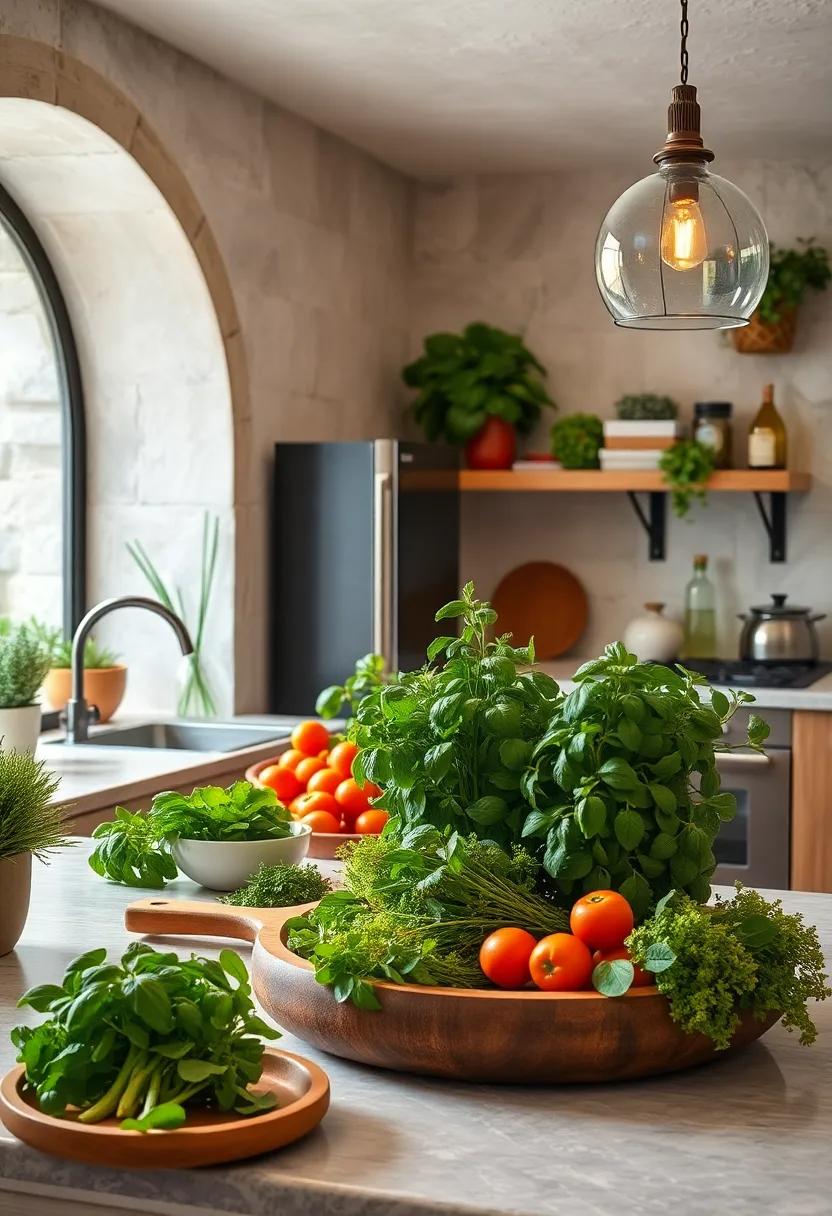
In the Mediterranean kitchen, fresh herbs are the vibrant threads that weave together a tapestry of flavor and aroma. Imagine a sun-drenched garden where basil, oregano, and parsley grow luxuriantly, each adding its unique zest to a dish. Basil, with its sweet, peppery kick, is a staple in many Italian recipes, elevating everything from caprese salads to hearty pastas. The earthy notes of oregano dance through Greek and Spanish cuisines, infusing savory dishes like grilled meats and stews with a warm, aromatic depth.Meanwhile, parsley serves as the versatile herb that brightens up diverse dishes, providing a fresh, green accent that punctuates the richness of Mediterranean flavors. These fresh indulgences are not merely garnishes; they are integral, enriching your meals with their intoxicating scents and healthful properties.
To further illustrate the importance of fresh herbs in Mediterranean cooking, consider the following table showcasing different herbs and their culinary uses:
| Herb | Culinary Uses |
|---|---|
| Basil | Pasta sauces, pestos, salads |
| Oregano | Marinades, roasted vegetables, pizza |
| Parsley | Tabbouleh, garnishes, sauces |
| Thyme | Soups, stews, grilled meats |
| Rosemary | Roasted potatoes, foccacia, grilled lamb |
By incorporating these aromatic herbs into your everyday cooking, you’ll not only enhance the flavors of your meals but also embrace the vrey essence of Mediterranean culture. It’s a way to transport your kitchen to sunlit terraces overlooking azure seas, where each dish tells the story of a timeless culinary tradition. So don’t hold back; let fresh herbs be your guide as you embark on your Mediterranean culinary journey!
Tomatoes: Whether sun-dried, fresh, or canned, tomatoes provide a sweet-tart foundation for sauces, salads, and stews
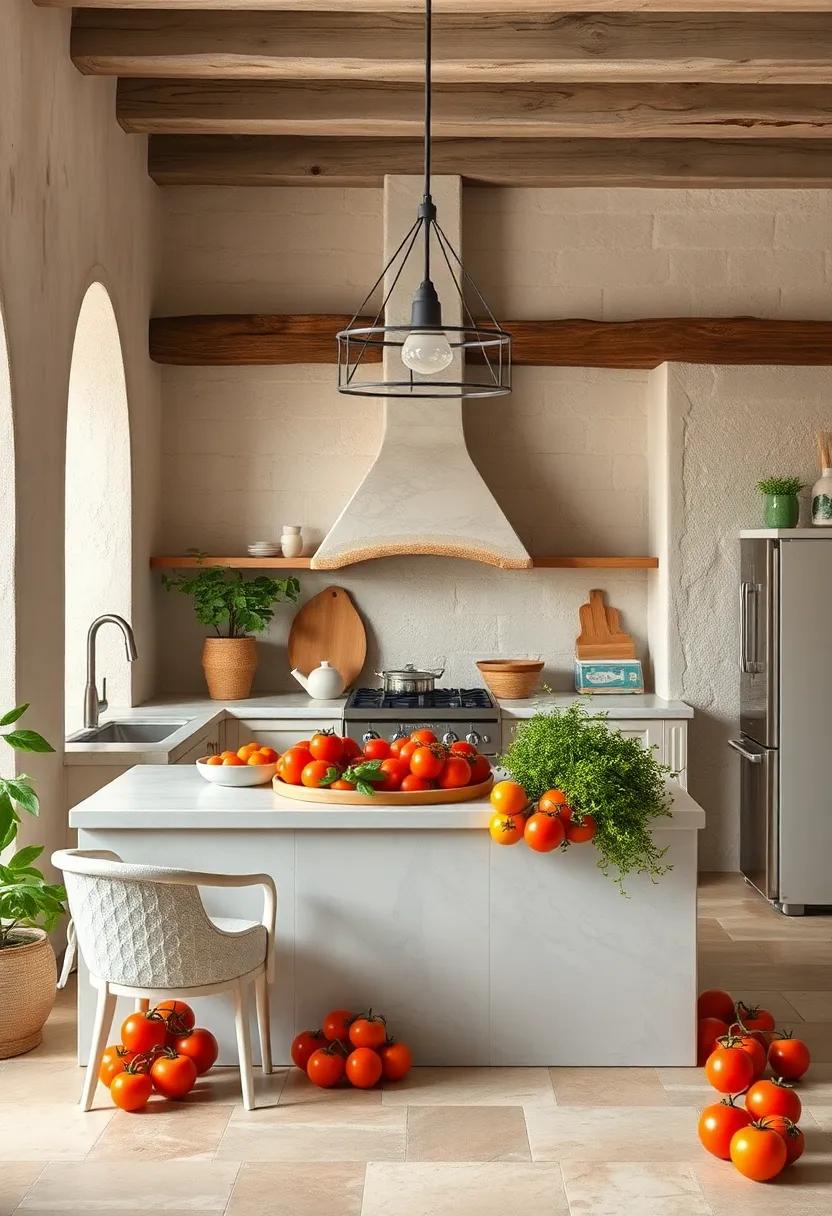
Whether you opt for fresh, sun-dried, or canned, tomatoes are an indispensable ingredient that enhances the flavors of Mediterranean dishes. Fresh tomatoes, bursting with sweetness, serve as a vibrant base for salads, adding a refreshing crunch. For those looking to infuse deeper flavors, sun-dried tomatoes bring a concentrated sweetness that elevates pasta dishes and antipasti platters alike. Their chewy texture and rich umami notes can transform any meal into a treat for the palate. canned tomatoes provide a year-round pantry staple that guarantees the taste of summer, bringing comforting warmth to stews and sauces when fresh tomatoes are out of season.
In the culinary landscape of the Mediterranean, tomatoes are versatile enough to star in a range of dishes. Here’s a glance at how these varieties can be utilized:
| Tomato Type | Common Uses |
|---|---|
| Fresh | Salads,Salsas,Bruschetta |
| Sun-Dried | Pasta Dishes,Tapenade,Pesto |
| Canned | Soups,Stews,Sauces |
From traditional ratatouilles to simple Caprese salads,the presence of tomatoes enriches every bite with their characteristic sweet-tart flavor. This adaptability not only provides a delightful taste but also adds a gorgeous pop of color to your Mediterranean creations, making each dish appealing to both the eyes and the taste buds.
Feta Cheese: Creamy and tangy, feta cheese adds a delightful touch to salads, pastries, and spreads, embodying the taste of Greece

Feta cheese, adored for its creamy texture and deliciously tangy flavor, is a quintessential component of Mediterranean cuisine. This crumbly cheese pairs beautifully with a variety of dishes, elevating simple salads and transforming everyday meals into culinary experiences. Whether crumbled over a vibrant Greek salad or mixed into a warm spinach pie, feta infuses each bite with a savory burst that conjures images of sun-drenched olive groves and rustic tavernas. its versatility knows no bounds, effortlessly enhancing everything from fresh vegetable dishes to comforting grain salads.
When using feta cheese in your cooking, consider these delightful combinations that highlight its unique flavor:
- Salads: Toss it with watermelon and mint for a refreshing summer dish.
- Pastries: Incorporate it into spanakopita alongside fresh herbs and flaky phyllo dough.
- Spreads: Blend with Greek yogurt and garlic for a rich dip perfect for pita or vegetables.
- Pasta: Sprinkle crumbled feta over a bowl of spaghetti tossed with cherry tomatoes and basil.
- savory Tarts: Combine with roasted vegetables for a hearty, flavorful filling.
Chickpeas: A staple in Mediterranean diets, chickpeas are versatile and packed with protein, perfect for salads, dips, and stews

Chickpeas, often called garbanzo beans, are a cornerstone of Mediterranean cuisine, boasting a delectable nutty flavor and a hearty texture. Their remarkable ability to absorb flavors makes them an ideal ingredient for crafting a wide array of dishes that can elevate any meal. From vibrant salads to creamy dips, chickpeas can be the star or a supporting player, adding both substance and protein to your culinary creations.
When it comes to readiness, the possibilities with chickpeas are endless. They can be roasted to create a crunchy snack, blended into luxurious hummus, or simmered in rich stews that warm the soul. Below is a simple table outlining some popular Mediterranean dishes featuring chickpeas:
| Dish | Description |
|---|---|
| Hummus | A creamy blend of chickpeas, tahini, lemon, and garlic. |
| Falafel | Fried patties made from ground chickpeas and spices, frequently enough served in pita. |
| Chickpea Salad | Refreshing combination of chickpeas, vegetables, and dressing. |
| Chana Masala | Spicy Indian-inspired dish featuring chickpeas in a rich tomato sauce. |
In addition to their culinary versatility, chickpeas are a powerhouse of nutrition, offering an excellent source of plant-based protein, fiber, and essential vitamins and minerals. Incorporating chickpeas into your Mediterranean diet not only enhances the dishes’ flavor but also promotes overall health, making them an indispensable ingredient in your kitchen. Experimenting with chickpeas allows for endless creativity, whether you’re whipping up a quick lunch or preparing an elaborate feast.
Eggplant: This rich, meaty vegetable is often featured in dishes like ratatouille or baba ganoush, adding depth and texture

Eggplant, with its glossy deep purple skin and creamy texture, serves as a versatile base in many mediterranean recipes. When cooked, it transforms into a rich canvas that absorbs flavors beautifully, making it a staple in traditional dishes. Whether grilled, roasted, or sautéed, this vegetable enhances the depth of flavor in dishes like ratatouille—a rustic blend of seasonal vegetables—offering a hearty bite without overshadowing the other ingredients. Its ability to take on a meaty quality also shines in dips like baba ganoush, where charred eggplant is mingled with tahini, garlic, and lemon juice to create a smoky and savory experience that pairs perfectly with warm pita bread.
The culinary versatility of eggplant goes beyond its nutritional benefits.It’s low in calories yet high in fiber, making it a great addition to heart-healthy diets. When selecting eggplants, look for ones that are firm and heavy for their size, with smooth, unblemished skin. For an added twist,consider experimenting with varieties like white eggplant,which has a milder flavor,or Thai eggplant,which adds an intriguing bite to curries and stir-fries.In Mediterranean cooking,eggplant can be marinated,layered in casseroles,or even transformed into tantalizing sauces,showcasing the ingredient’s ability to adapt to various cuisines and cooking methods.
Cumin: A warm and aromatic spice, cumin enhances many Mediterranean recipes, lending its earthiness to stews and grains

Cumin stands out in the spice aisle with its distinctive warm and nutty aroma, making it a staple in Mediterranean cuisine. This spice imparts a rich earthiness that beautifully complements a host of dishes. Whether you’re simmering a hearty lamb stew or whipping up a vibrant couscous salad, cumin works its magic, blending seamlessly with other flavors.Its unique profile enhances ingredients, providing depth and warmth that elevate otherwise simple preparations to culinary masterpieces.
in the realm of Mediterranean dishes, the versatility of cumin cannot be overstated. It shines not only in stews but also in various grain-based recipes, such as quinoa and bulgur wheat, where it can be incorporated to introduce a subtle yet impactful flavor. Roasting cumin seeds before using them can unlock even more of their aromatic qualities, leading to a fragrant finish in your favorite vegetable dishes or dips. here are a few classic applications to inspire your cooking:
- Hummus: A pinch of cumin can elevate the creamy dip, adding an earthy undertone.
- Shakshuka: Incorporate cumin to enhance the spiced tomato sauce, bringing warmth to the dish.
- Falafel: Mix ground cumin into your falafel batter for a unique flavor twist.
Red wine Vinegar: With its bold flavor, red wine vinegar brightens dressings and marinades, adding a punch to roasted vegetables

One of the most vibrant players in the Mediterranean kitchen is an underutilized gem: a deep-hued liquid crafted from fermented red wine. Its sharp acidity and fruity undertones make it a go-to for elevating everyday meals. When whisked into dressings, it creates a harmonious balance, melding seamlessly with olive oil, fresh herbs, and a sprinkling of sea salt. A simple vinaigrette can morph into a culinary masterpiece, brightening greens or drizzled over grilled meats. For those seeking freshness, a splash can transform a basic tomato salad into a zesty antipasto, stimulating the taste buds with each bite.
But its magic doesn’t just stop at salads. This versatile ingredient is equally adept at enhancing marinades for roasted vegetables.The vinegar’s acidity penetrates hearty produce such as eggplant, bell peppers, or zucchini, deepening their natural flavors while adding a elegant tang. Desiring a robust side dish? Take advantage of its rich flavor by marinating veggies overnight before roasting to caramelized perfection.These vibrant, flavor-packed vegetables not only accompany your main dishes gracefully but also serve as a cooked dish that stands proudly on its own.
artichokes: Whether preserved or fresh, artichokes bring a unique flavor and are often a star ingredient in dips and salads
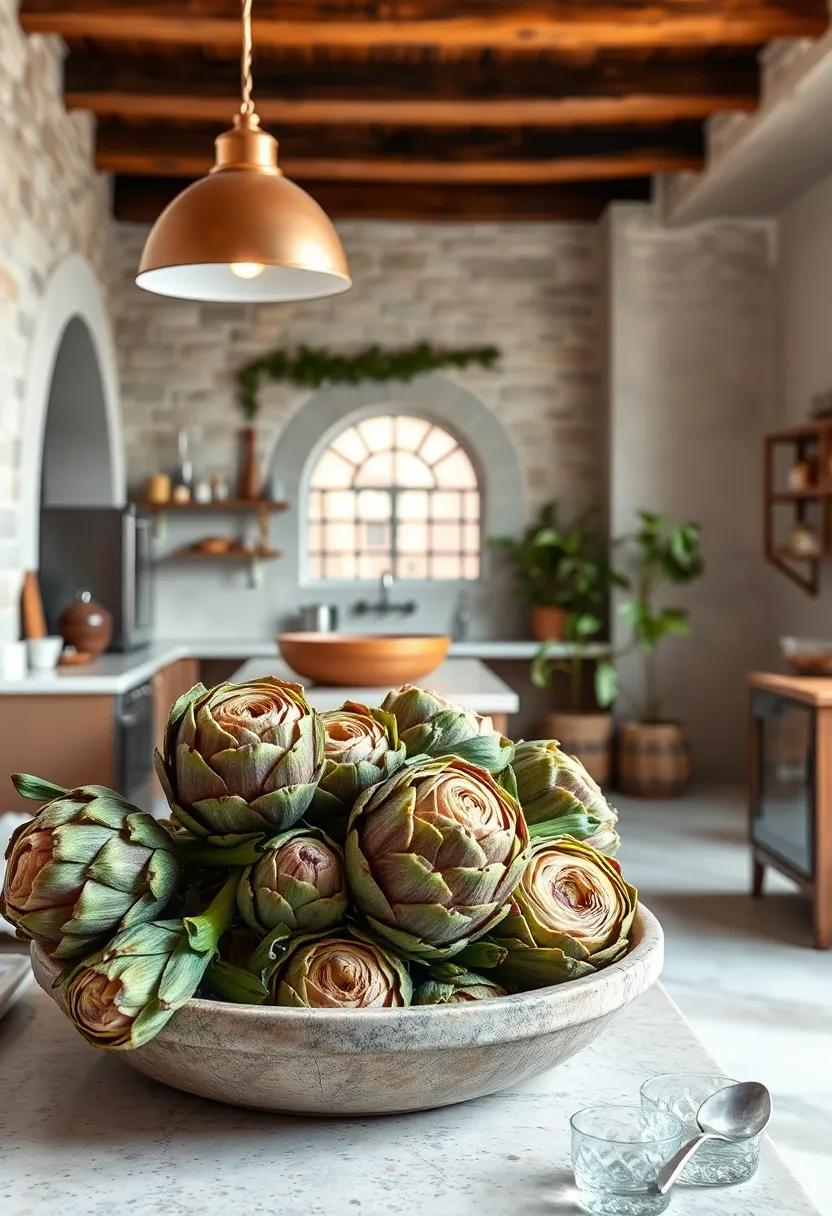
Artichokes are a culinary delight that bridges the gap between fresh and preserved produce,offering a range of flavors and textures that can elevate any dish. When fresh, artichokes promise a tender heart enveloped in nutty, grassy notes that can transform simple salads and roasted vegetable medleys into something exquisite. To prepare them,just steam or roast until tender and toss with lemon juice,olive oil,and sea salt for a refreshing side dish. Alternatively, preserved artichokes, whether marinated or canned, bring a vibrant tanginess to dips and spreads, making them essential for appetizers. Try incorporating them into a classic artichoke dip alongside cream cheese and Parmesan for a sure crowd-pleaser.
In addition to their versatile application in dips and salads, artichokes shine brightly within Mediterranean cuisine. their unique flavor pairs beautifully with a variety of ingredients, making them a star in dishes such as pasta, risotto, and even pizza. Here’s how they can be showcased:
| Dish | Ingredient Pairings |
|---|---|
| Stuffed Artichokes | Breadcrumbs, Garlic, Parsley |
| Artichoke & Spinach Dip | Spinach, Cream Cheese, Garlic Powder |
| Pasta Primavera | Cherry Tomatoes, Zucchini, Basil |
Whether served alongside a vibrant Mediterranean mezze platter or as a main dish, artichokes remain a versatile ingredient that brings a delightful twist to your savory adventures. They’re not just food; they’re an experience, inviting you to savor each bite, and with their unique texture and flavor, it’s easy to see why they are often featured in the grand tapestry of Mediterranean cooking.
Capers: These tiny pickled flower buds add a burst of briny flavor, perfect for elevating pasta dishes and dressings
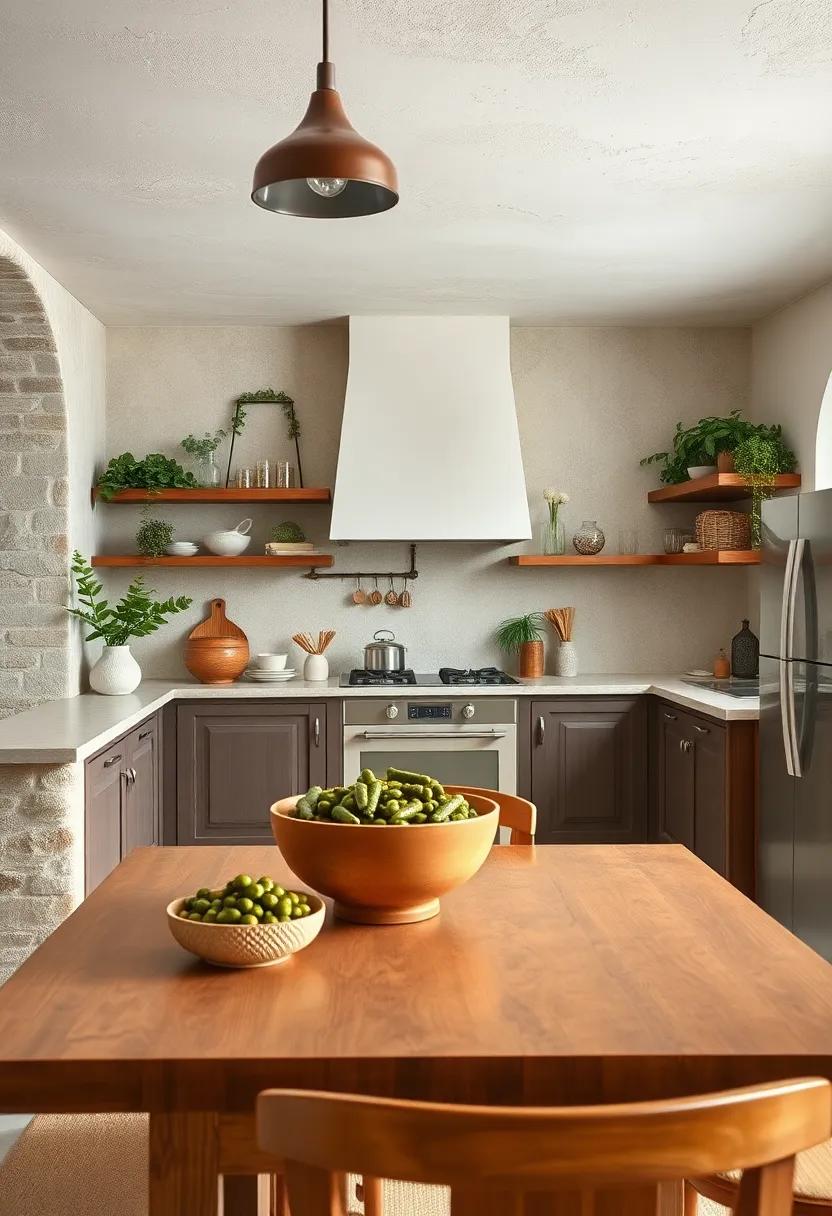
These vibrant little orbs pack a powerful punch of flavor into any dish they touch. Hand-harvested from the caper bush,the buds are typically pickled in vinegar or brine,transforming them into zesty bite-sized treasures. Their briny essence can be used to enhance a variety of Mediterranean dishes, adding a unique depth to classic recipes. You can toss them into pasta primavera or fold them into creamy sauces, effectively elevating the overall taste profile. not only do they add complexity, but their tangy flavor works wonders in contrast with rich ingredients like olive oil and cheeses.
Capers also shine in dressings and marinades, offering a delightful burst of flavor that complements greens and proteins alike. When creating a memorable vinaigrette, consider blending them with extra virgin olive oil, lemon juice, and Dijon mustard for an unforgettable taste that dances on your palate. For a creative twist, try incorporating capers into your hummus or as a topping for grilled fish. Their versatility knows no bounds, making them an indispensable addition to your Mediterranean kitchen.
Sea Salt: Essential for seasoning, good-quality sea salt enhances the natural flavors of ingredients without overpowering them

When it comes to culinary magic, good-quality sea salt serves as the silent hero in your Mediterranean kitchen. Unlike ordinary table salt, which can mask the essences of your ingredients, sea salt excels at enhancing their natural flavors. Its slightly coarse texture provides a delightful crunch, making it perfect for finishing dishes. sprinkle it on roasted vegetables or grilled fish just before serving, allowing the salt to accentuate their freshness and bring out the intricate layers of taste that define Mediterranean cuisine.
Moreover,sea salt is diverse enough to suit various culinary applications. From flaky Maldon salt that adds a burst of flavor to steaks and salads to coarser varieties ideal for brining meats or pickling vegetables, each type plays a pivotal role in elevating your cooking. Think about incorporating a pinch of flavored sea salts,such as garlic-infused or herb-laden options,to add an extra dimension to your dishes.Embracing this simple yet essential ingredient can transform your meals into memorable experiences that celebrate the vibrant essence of Mediterranean flavors.
Pita Bread: Soft and fluffy, pita is the perfect companion for dips like hummus or to wrap around savory fillings

Pita bread is a versatile staple in Mediterranean cuisine, known for its soft, fluffy texture and pocket-like shape. This beloved bread serves as an ideal companion for a variety of flavorful dips and fillings. Whether you’re hosting a cozy gathering or preparing a casual family meal, fresh pita can elevate your dining experience by adding a unique touch. It pairs beautifully with hummus, offering a delightful contrast of flavors and textures, thanks to its ability to scoop up creamy goodness with ease. Moreover, it can hold its own with flavorful spreads like baba ganoush or tzatziki, making every bite a delightful journey through Mediterranean tastes.
Not just a dip vessel, pita bread is also an excellent wrap for savory fillings. You can stuff it with grilled meats, fresh vegetables, or tangy cheeses to create a satisfying meal. Some popular combinations include shawarma with zesty garlic sauce or falafel paired with crunchy pickles.The gentle warmth and soft texture of pita enhance the overall dish, transforming simple ingredients into a mouthwatering experience. To make your culinary exploration even easier, here’s a quick look at popular pita bread fillings and pairings:
| Filling | Flavor Profile |
|---|---|
| Grilled Chicken | Savory, Tender |
| Falafel | Crispy, Herbaceous |
| Roasted Vegetables | Earthy, Sweet |
| feta Cheese | Salty, Creamy |
| Lentil Salad | Nutty, Tangy |
Anchovies: Small but mighty, these umami-rich fish are often used in sauces, dressings, or as a pizza topping for depth

The humble anchovy might potentially be tiny in size, but its impact on mediterranean cuisine is nothing short of monumental. Known for their robust umami flavor,these fish are a secret weapon in the kitchen,easily transforming simple dishes into culinary masterpieces. When incorporated into sauces and dressings, anchovies deliver a salty richness that enhances various ingredients without overpowering them. Whether blended into a zesty Caesar dressing or mixed into a classic puttanesca sauce, their savory essence elevates the dish, making it irresistibly delectable.
Moreover, anchovies find their way onto pizzas, offering a unique depth that pairs beautifully with other toppings. Their ability to meld with cheese,olives,and fresh herbs creates a flavor explosion that delights the palate. Additionally, anchovies are a nutrient-rich choice, packed with omega-3 fatty acids and protein. This versatile ingredient can be found in a multitude of forms—whole, filleted, or packed in oil—which allows for easy incorporation into various recipes. Discovering the many ways to use anchovies may just lead you to your new favorite Mediterranean flavor enhancer.
cucumbers: Crisp and refreshing, cucumbers add a cooling crunch to salads and mezze platters, embodying the Mediterranean vibe

Often underrated,cucumbers are the unsung heroes of the Mediterranean kitchen,bringing a delightful mixture of texture and taste to an array of dishes. Their crispness acts as a perfect counterbalance in salads, providing a refreshing note alongside vibrant tomatoes and tangy feta cheese. Whether sliced thin in a traditional greek salad or diced into a zesty tzatziki, cucumbers not only enhance flavor but also add a splash of color to your meal. Explore the variety by choosing between different types such as English cucumbers, known for their lack of seeds and tender skin, and Persian cucumbers, which are slightly sweeter and crunchier.
Along with salads, cucumbers shine on mezze platters, where they can be paired with dips like hummus or baba ganoush. Their cool, hydrating qualities make them a charming companion alongside spicy or rich dishes, creating a balance that is quintessentially Mediterranean. Enjoy them drizzled with a touch of extra virgin olive oil and sprinkled with sea salt for a simple yet sophisticated side. Moreover,experimenting with cucumbers in beverages like refreshing cucumber lemonade or muddled in cocktails amplifies their versatility beyond the plate.
Bell Peppers: Sweet and colorful, bell peppers are perfect for grilling, roasting, or adding to salads for a vibrant finish
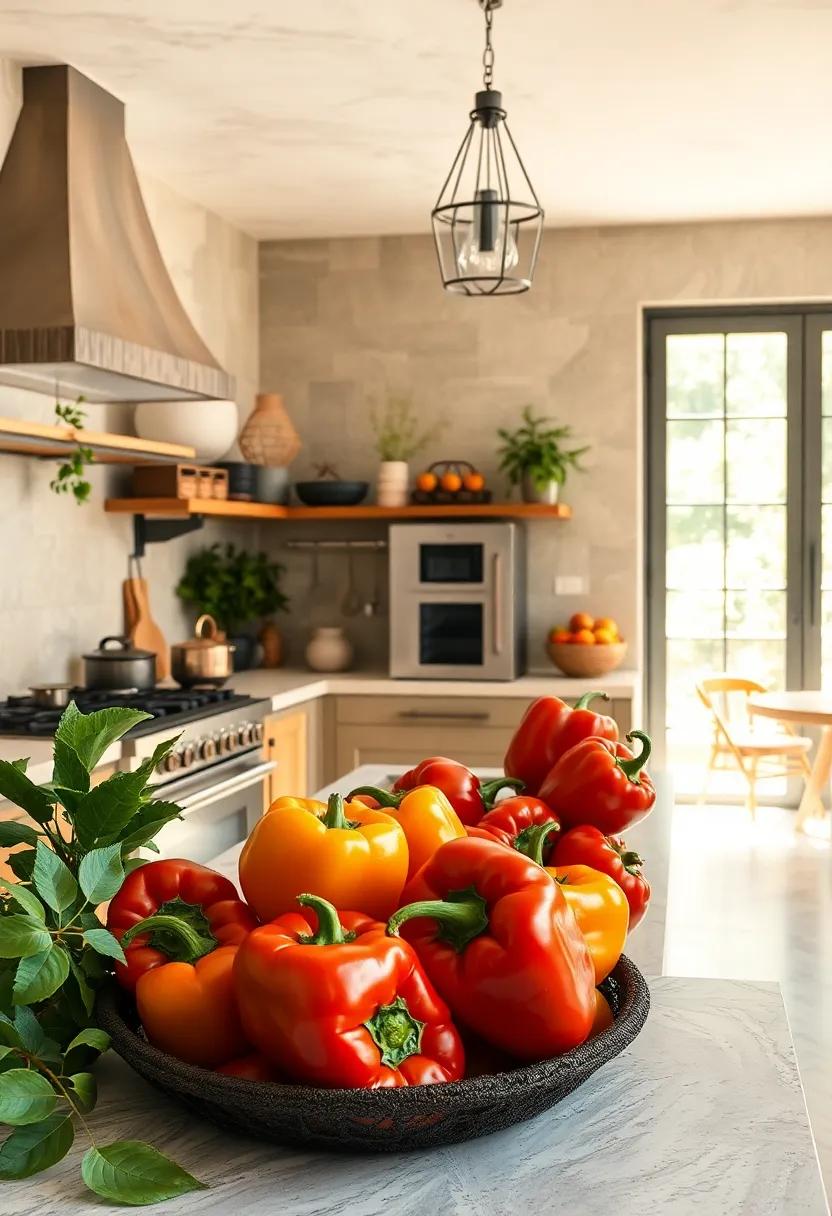
Bell peppers boast a vibrant palette that can enliven any meal, bringing not only an explosion of color but also a delightful crunch. Their natural sweetness pairs harmoniously with smoky flavors, making them ideal for grilling or roasting. Toss them on the barbecue alongside other veggies, and watch them caramelize into a flavorful treat that complements any dish. For a fresh twist,slice them into thin strips to add a satisfying crunch to salads,enhancing your Mediterranean feast with a splash of color.
Along with their culinary versatility, bell peppers are packed with health benefits, making them a great addition to your kitchen staples. They are rich in vitamins A and C, along with antioxidants that promote overall health. Consider experimenting with different colors—red, yellow, and green—each adding its unique flavor profile. To help you get started,here’s a quick look at their flavor characteristics:
| Color | Flavor Profile | Best Uses |
|---|---|---|
| Red | Sweet and fruity | Salads,roasting,sautéing |
| Yellow | Sweet and mild | Stuffed peppers,stir-fries |
| Green | Bitter and crisp | Grilling,sautés,dips |
Zucchini: This versatile vegetable can be grilled,stuffed,or spiralized,offering a mild taste that complements many dishes

Zucchini is a culinary chameleon that shines in a variety of Mediterranean dishes. Its mild flavor makes it adaptable, allowing it to absorb the essence of other ingredients while adding a delightful texture.Whether you are hosting a summer barbecue or preparing a comforting dinner, zucchini can easily elevate your meal. For grilling, slice the vegetable into thick rounds, brush with olive oil, and sprinkle with herbs for a smoky side dish that pairs beautifully with fish or grilled meats. Alternatively, for a heartier option, consider stuffing zucchini boats with a blend of quinoa, tomatoes, and feta cheese, allowing the flavors to meld into a delectable, nutrient-packed entrée.
If you’re looking to embrace the trend of spiralizing vegetables, zucchini is your go-to choice. These zoodles—zucchini noodles—make for a gluten-free pasta option, perfect with a rich tomato sauce or tossed in a refreshing pesto.Additionally, zucchini’s versatility extends to baked dishes; incorporating it into savory muffins or frittatas adds moisture and nutrition without overpowering the other flavors. With its unique ability to blend seamlessly into various recipes,zucchini is undoubtedly a staple that enhances the Mediterranean diet in countless delightful ways.
Quinoa: A nutritious grain, quinoa serves as a gluten-free base for salads and bowls, packed with protein and fiber

Quinoa is an exceptional ingredient that not only serves as a gluten-free alternative but also brings a delightful texture and nutty flavor to any Mediterranean dish. Whether you’re crafting a vibrant salad or a hearty grain bowl, its versatility shines through, enhancing the overall experience. This superfood is rich in protein, making it an excellent choice for those seeking plant-based options, while its high fiber content aids in digestion, contributing to a healthy lifestyle.
Incorporating quinoa into your meals is as easy as it is rewarding. Simply boil it for 15 minutes and let it fluff up, then pair it with seasonal vegetables, herbs, and a drizzle of olive oil for a wholesome side dish or main attraction. For inspiration, consider the following flavor pairings that complement quinoa beautifully:
- Fresh Vegetables: Bell peppers, cucumbers, tomatoes
- Herbs: Parsley, mint, basil
- Fats: Avocado, feta cheese, olives
- Dressings: Lemon vinaigrette, tahini sauce, balsamic reduction
Saffron: Known for its unique flavor and vibrant color, saffron elevates dishes such as paella and risottos to gourmet status

Saffron, the world’s most expensive spice by weight, is celebrated not only for its steep price but for its extraordinary ability to transform ordinary dishes into exceptional culinary experiences. Its delicate threads, derived from the stigma of the Crocus sativus flower, impart a rich golden hue and a complex, earthy flavor that deeply enriches any meal. When added to dishes like paella or risotta, saffron elevates these staples with a luxurious depth and aroma that is simply unmatched.
This exquisite spice pairs wonderfully with a variety of ingredients,enhancing both taste and visual appeal. Here’s how saffron works its magic in some Mediterranean favorites:
- Paella: Saffron’s vibrant color is essential for achieving the signature look of this beloved Spanish dish.
- risotto: Adding saffron infuses the creamy rice with a luxurious flavor, making it a downright indulgent treat.
- Seafood Dishes: Saffron’s subtlety complements the briny taste of fish and shellfish, creating a harmonious blend of flavors.
Olives: From Kalamata to green, olives are the quintessential Mediterranean snack, offering savory richness and a touch of brine
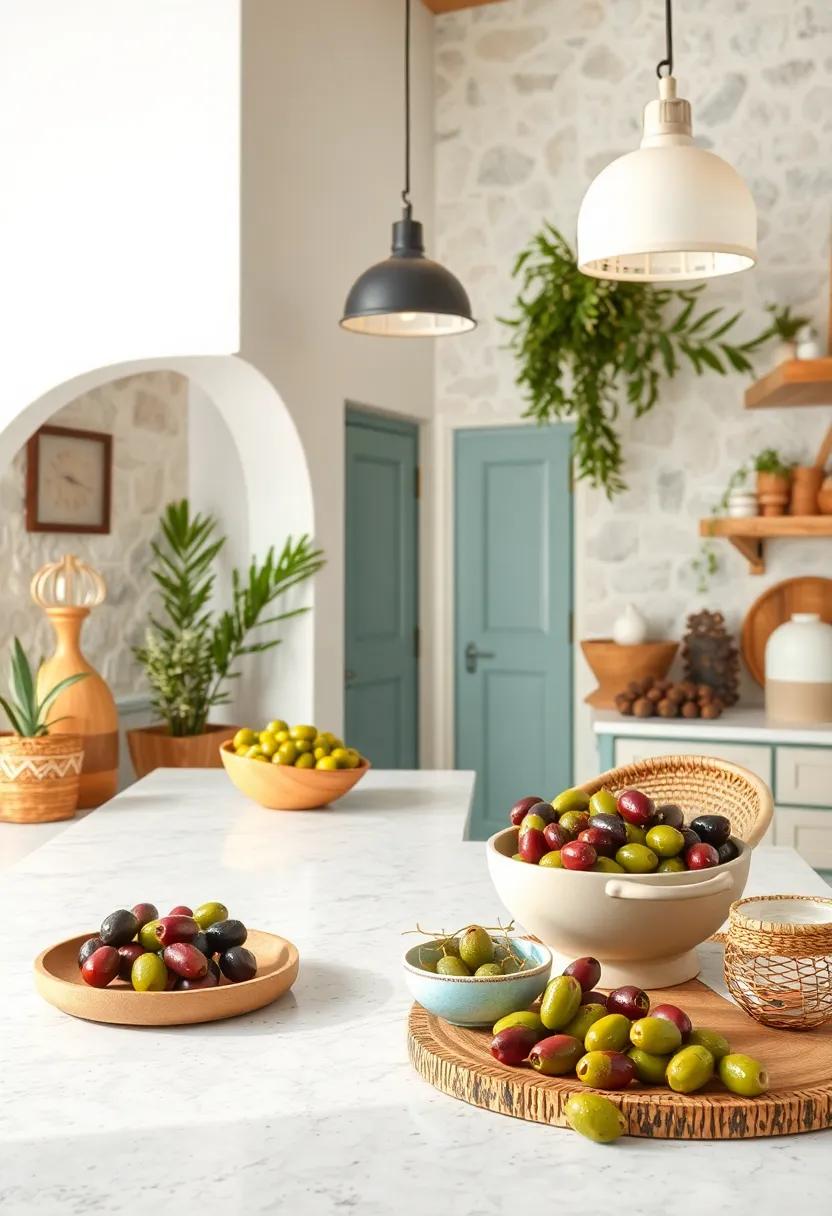
In the heart of Mediterranean cuisine, olives stand out as a beloved staple, celebrated for their robust flavors and versatility. From the deep purple hues of Kalamata to the vibrant green varieties, olives are more than just a snack; they are a culinary experience evocative of sun-drenched groves and coastal breezes. Rich in healthy fats and antioxidants, they not only enhance the taste of dishes but also promote well-being. Whether consumed whole, sliced, or blended into tapenade, olives impart a delightful briny essence, making them an essential ingredient for salads, pizza, and countless other Mediterranean delights.
The world of olives is diverse and fascinating, offering significant variations in taste, texture, and culinary application. Here are a few popular types to explore:
- Kalamata: Dark, almond-shaped olives renowned for their fruity flavor and meaty texture, ideal for Greek salads.
- Castelvetrano: Sweet and crunchy with a bright green hue, these olives are perfect for snacking or antipasto platters.
- Gaeta: Small, wrinkled black olives from Italy that are soft and mild, great for tapenades.
- Manzanilla: A green Spanish olive with a distinct nutty flavor, often enjoyed as part of a mezze.
- Liguria: These Italian olives are known for their bold taste and often serve as a key ingredient in pasta dishes.
Consider incorporating olives into a simple yet delightful dish by mixing them with various Mediterranean staples. Below is a quick reference table showcasing a few delicious pairing ideas:
| Olive Type | Ideal Pairing | Best Dish |
|---|---|---|
| kalamata | Feta cheese, tomatoes | Greek salad |
| Castelvetrano | Artichokes, almonds | Antipasto platter |
| Gaeta | Capers, anchovies | Putanesca sauce |
| Manzanilla | Serrano ham, marcona almonds | Tapas |
| Liguria | Parmesan, basil | Pasta dishes |
Pistachios: These delightful nuts add a crunchy kick to both sweet and savory dishes, perfect for garnishing salads or desserts

Pistachios,with their vibrant green hue and delightful crunch,are a culinary gem in the Mediterranean kitchen. These versatile nuts can transcend the boundaries of both sweet and savory dishes, elevating them to new heights. Sprinkle them over fresh greens to add a satisfying texture and flavor to salads, or incorporate them into dressings for an unexpected twist. The nutty essence of pistachios pairs wonderfully with ingredients like feta and citrus, creating a delicious harmony that truly encapsulates the essence of Mediterranean cuisine.
For a sweeter touch, consider incorporating crushed pistachios into desserts such as baklava or ice cream. Their distinctive taste offers a delightful contrast to rich flavors,making every bite a celebration of textures. Additionally, they serve as a stunning garnish, turning everyday sweets into visual masterpieces. Be it as a topping on yogurt or blended into hummus for a unique flavor profile, pistachios are a must-have for anyone looking to explore the rich culinary traditions of the Mediterranean.
Honey: Sweet and floral, honey enhances yogurt, desserts, and dressings with its natural sweetness and complexity

Honey brings a delightful sweetness that perfectly complements a variety of dishes in the Mediterranean diet. When drizzled over Greek yogurt, it creates a luscious blend that tantalizes your taste buds, enhancing the creaminess and adding a floral note. This pairing is not just a treat for the palate; it also offers a quick and nutritious breakfast option, perfect for those looking to fuel their day with wholesome ingredients. Moreover, honey can elevate simple desserts, transforming them into indulgent delights. Imagine a honey-infused baklava,where the sticky syrup seeps through layers of flaky pastry,or a light honey glaze on fresh fruits that brings out their natural flavors.
In salting and dressing applications, honey plays a crucial role as well. It acts as a natural sweetener in vinaigrettes, balancing the acidity of vinegar with its complex profile. A combination of honey, olive oil, and lemon juice creates a robust dressing that can drizzle over your favorite Mediterranean salads, such as a classic tabbouleh or a vibrant Greek salad. The versatility of honey is only limited by your imagination, making it an essential ingredient to have on hand for not just adding sweetness, but depth and charm to your culinary creations.
Red Pepper Flakes: spicy and zesty, red pepper flakes offer a kick to dishes, perfect for those who enjoy a bit of heat

Featuring a bright red color and a punchy flavor, red pepper flakes are a staple in Mediterranean kitchens for those craving a flavorful edge. These dried and crushed chili peppers are versatile and can elevate a wide range of dishes, from zesty pasta sauces to vibrant vegetable medleys. Not only do they add heat, but they also bring an earthy aroma and a depth of flavor that can transform even the simplest of recipes. Incorporating red pepper flakes is all about balance, turning up the heat just enough to stimulate the palate without overwhelming the dish.
Beyond their heat, red pepper flakes serve as an excellent finishing touch, enhancing the presentation with their vibrant hue. They pair effortlessly with various ingredients, making them perfect for:
- Traditional Italian Pizzas: A sprinkle before serving adds a warm bite.
- Meditterranean Roasted Vegetables: Mix with olive oil for a spicy marinade.
- Soups and Stews: Infuse warmth and complexity to enhance your favorite comfort food.
Here’s a quick summary of how red pepper flakes pair with common Mediterranean ingredients:
| Ingredient | Perfect Pairing |
|---|---|
| Tomatoes | Spicy Arrabbiata Sauce |
| feta Cheese | Feta Dip with Olive oil |
| Lentils | Curried lentil Soup |
Cucumber Yogurt Sauce (Tzatziki): A creamy blend of yogurt, cucumbers, and herbs, tzatziki is essential for dipping and dressing

Picture this velvety sauce gracing your table, its refreshing coolness a perfect complement to many Mediterranean dishes. Tzatziki, a classic staple, marries the crunch of fresh cucumbers with rich Greek yogurt and a splash of fragrant olive oil. To elevate its flavor, garlic, dill, and a hint of lemon juice are added, creating a delightful balance of tanginess and creaminess. This sauce is not only a beloved accompaniment for grilled meats and pita bread, but it also serves as a vibrant dressing for salads or mezze platters.
Crafting the perfect tzatziki requires a few simple ingredients that are essential in any Mediterranean kitchen. Here’s a quick look at the must-haves:
| Ingredient | Description |
|---|---|
| Greek Yogurt | Thick and creamy base packed with protein. |
| Cucumber | Shredded or diced for texture and freshness. |
| Garlic | adds depth and pungency. |
| Dill | Herbaceous notes for a traditional touch. |
| Olive Oil | Brings richness and smoothness to the sauce. |
| Lemon Juice | A splash of acidity for brightness. |
Use tzatziki not only as a dip but also as a base for sandwiches or as a topping for roasted vegetables. Its versatility allows it to enhance any dish with a burst of flavor and a creamy texture that invites seconds. Embrace this Mediterranean delight and watch it become a cornerstone of your culinary repertoire.
Barley: This hearty grain adds texture and nuttiness to salads and soups,making it a filling choice for mediterranean meals

Barley is a versatile grain that effortlessly enhances dishes with its chewy texture and subtle nuttiness. In Mediterranean cuisine, it serves as an ideal base for salads, where it can soak up flavorful dressings, creating a robust dish that satisfies the appetite.Try combining cooked barley with a medley of fresh vegetables, herbs like parsley and mint, and a drizzle of olive oil for a refreshing grain salad that speaks to the heart of Mediterranean cooking. Additionally, its hearty nature makes it a perfect addition to soups, providing a fulfilling anchor that complements rich broths and tender vegetables alike.
Not only does barley bring flavor and texture, but it is also packed with nutrition, making it a wise choice for those aiming to maintain a balanced diet. Rich in fiber, vitamins, and minerals, adding this grain to your meals can contribute to overall health and well-being. As an everyday staple, barley can transform a simple dish into a wholesome feast with just a few cooking techniques. Consider incorporating it into stews, casseroles, or even risottos, where it provides both heartiness and depth, allowing your menu to reflect the diverse and vibrant tapestry of Mediterranean culinary traditions.
Couscous: This versatile starch is quick to prepare and serves as a delightful base for salads and stews, soaking up flavors beautifully

Couscous is a marvel of texture and taste, offering an unbelievable foundation for a myriad of dishes. fast and easy to prepare, it’s as simple as adding hot water and letting it sit. This quick cooking process transforms fluffy grains into a perfect base for vibrant salads or hearty stews. the beauty of couscous lies in its ability to absorb flavors excellently, enhancing the overall dish.Add a splash of lemon juice, a sprinkle of herbs, or a drizzle of olive oil, and watch it come alive with Mediterranean flair.
When it comes to versatility, couscous truly shines in its adaptability with various ingredients. Consider incorporating an array of colorful vegetables,nuts,or dried fruits into your couscous dishes for added texture and flavor.Here are some popular pairings that elevate this humble starch into something extraordinary:
| Ingredients | Flavor Notes |
|---|---|
| Cherry Tomatoes | Bright and juicy |
| Feta Cheese | Creamy and tangy |
| Chickpeas | Nutty and filling |
| Spinach | Fresh and earthy |
| Raisins | Sweet and chewy |
By experimenting with these combinations, you can create a dish that is not only satisfying but also visually appealing.Whether served warm as a side or chilled in a salad,couscous invites creativity,making it a staple in any Mediterranean kitchen.
Fresh Fish: Highlighting the coastal bounty,fresh fish like sardines or sea bass are staples that offer a taste of the Mediterranean sea
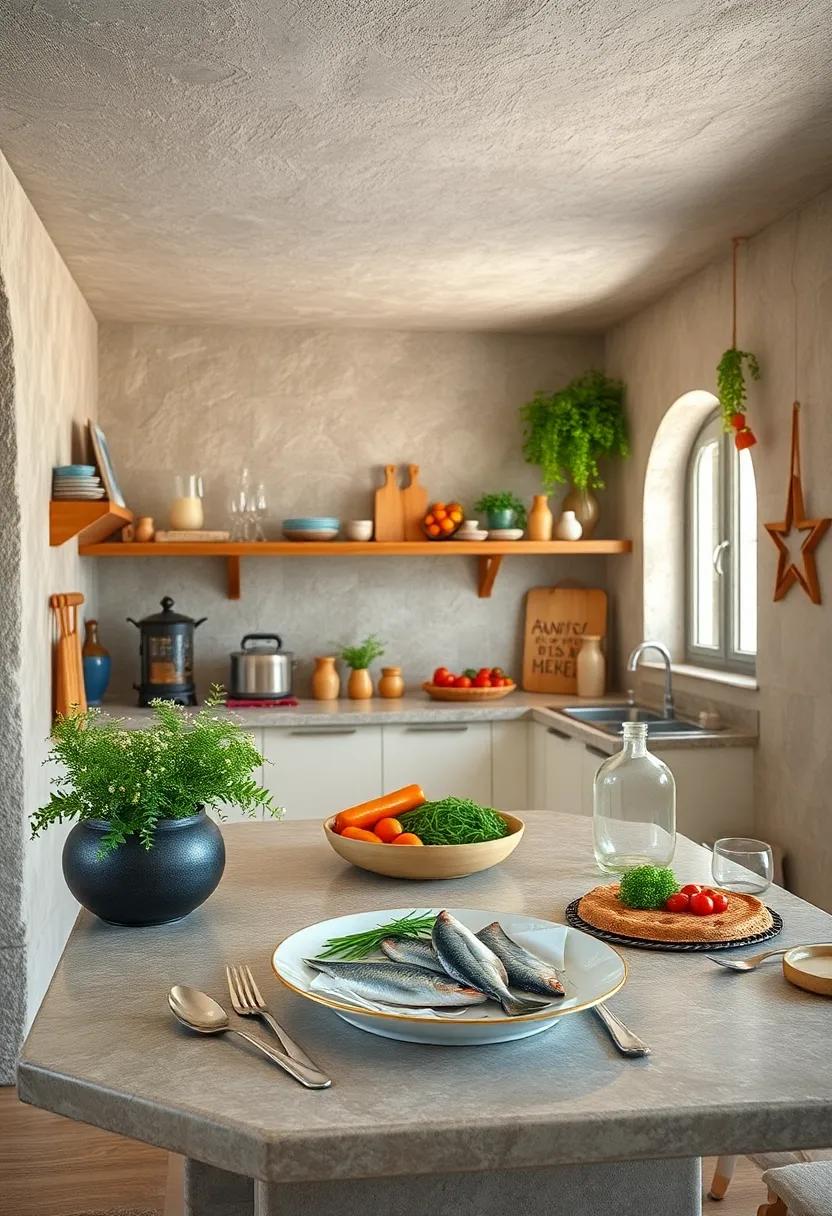
No Mediterranean kitchen is complete without the inclusion of fresh fish, which brings the taste of the azure waters directly to your plate. Sardines are a notably beloved choice, celebrated not only for their rich, savory flavor but also for their outstanding health benefits. Packed with omega-3 fatty acids, they contribute to cardiovascular health and can be grilled, marinated, or even enjoyed raw in a refreshing ceviche. Likewise, sea bass is a premier player in the Mediterranean seafood repertoire, prized for its tender and flaky texture. Whether simply drizzled with olive oil or grilled with lemon and herbs, it serves as a perfect canvas for fresh, vibrant flavors that evoke coastal escapades.
Embrace the local variations by exploring different preparations and seasonal selections. As you delve into the world of fresh fish, consider these delightful options:
- Anchovies: Often used in Mediterranean dips, they infuse dishes with umami and depth.
- Mackerel: Rich and robust,a great choice for smoking or grilling.
- Trout: An excellent freshwater alternative that can be prepared simply with herbs.
sumac: This tangy spice imparts a lemony flavor to dishes, perfect for sprinkling over salads, grilled meats, and vegetables

Sumac is a vibrant spice that brings a delightful zest to the Mediterranean kitchen, offering a unique layer of flavor that is both tangy and refreshing. This reddish-purple powder is made from the dried and ground berries of the sumac shrub, imparting a lemony brightness that elevates various dishes. It’s an ideal addition to sprinkle atop salads, lending a pop of color and a burst of acidity that balances richer ingredients. use it to liven up roasted vegetables or to enhance grilled meats, transforming ordinary meals into culinary masterpieces.
Incorporating sumac into your cooking is not only easy but can also be incredibly rewarding. Here are some easy ways to use sumac:
- salads: Sprinkle over fresh greens or falafel salads for a citrusy lift.
- Grilled Meats: Use it as a marinade or dry rub for chicken, lamb, or beef before grilling.
- Vegetable Dishes: Toss with roasted or grilled vegetables to enhance flavors.
- Rice and Couscous: Stir into grains for a tangy twist in pilafs or side dishes.
Experimenting with this versatile spice can enhance not just the taste but also the presentation of your dishes. Whether you’re preparing a classic tabbouleh or a vibrant Mediterranean grain bowl, sumac is the secret weapon that adds a luscious tartness and unexpected depth to every bite.
To Conclude
As we wrap up our flavorful journey through the 29 essential ingredients that define a Mediterranean kitchen, we hope you’ve discovered not just a list, but a palette of possibilities that can transform your culinary adventures. Each ingredient serves as a building block, rich with history and ripe with potential, inviting you to explore vibrant flavors and aromatic sensations.
Remember, the heart of Mediterranean cooking lies in its simplicity and the quality of its ingredients. So, whether you’re drizzling olive oil over fresh vegetables, crafting a zesty dip, or simmering a fragrant stew, let the essence of this region elevate your dishes.
As you embark on your own Mediterranean culinary adventures, cherish the traditions, embrace creativity, and most importantly, enjoy the process of bringing these ingredients together. Your kitchen is the canvas—let these staples inspire your next masterpiece. Bon appétit!









